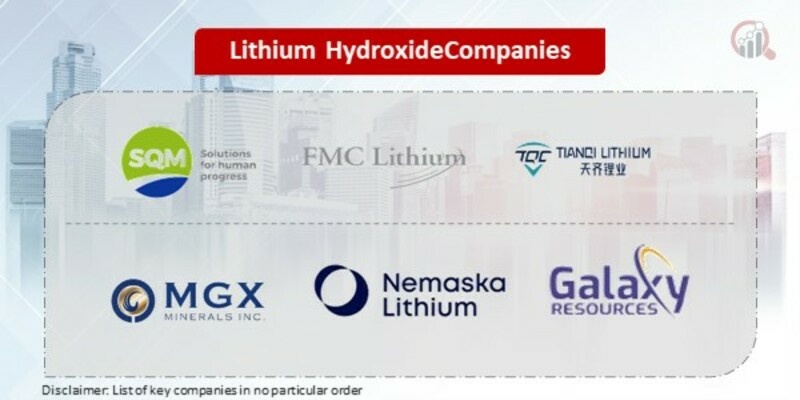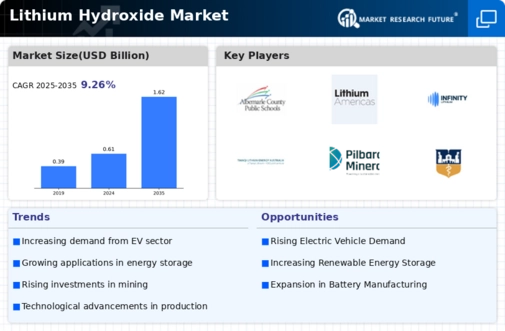Top Industry Leaders in the Lithium Hydroxide Market

The global lithium hydroxide market is experiencing a meteoric rise, propelled by the insatiable appetite for lithium-ion batteries powering the electric vehicle revolution and the green energy shift. lithium hydroxide market has become a fierce battleground for established players and ambitious newcomers.
Market Summary and Share Determinants:
Lithium hydroxide, a key precursor in lithium-ion battery production, dictates the pulse of this dynamic landscape. Market share in this electrifying arena hinges on several crucial factors:
-
Production capacity and resource security: Securing long-term lithium resources and expanding production facilities remain vital for consistent supply and market dominance. China currently holds the reins, accounting for over 70% of global production. -
Technological advancements: Innovation in extraction, processing, and recycling technologies directly impacts efficiency, environmental footprint, and cost competitiveness. Companies pioneering greener and more efficient methods gain an edge. -
Downstream partnerships: Forging strategic partnerships with battery manufacturers and electric vehicle producers ensures secure offtake channels and strengthens market presence. -
Vertical integration: Controlling the entire supply chain, from lithium brine extraction to refined lithium hydroxide, offers greater control over quality and cost. -
Sustainability initiatives: Environmental concerns are pushing for ethical sourcing, responsible extraction practices, and reduced carbon footprint. Companies leading the charge in sustainable lithium hydroxide production attract both investors and environmentally conscious consumers.
Competitive Strategies in the Lithium Hydroxide Arena:
To navigate this intensely competitive landscape, companies are deploying a range of strategies:
-
Mergers and acquisitions: Consolidation is evident, with giants like Albemarle Corporation and Livent Corporation expanding their global footprint through strategic acquisitions. -
Investments in exploration and development: Securing new lithium resources through exploration ventures and developing efficient extraction methods are crucial for long-term market presence. -
Diversifying product portfolio: Offering various grades and purities of lithium hydroxide caters to diverse battery applications and customer needs. -
Focus on regional markets: Tailoring production and marketing strategies to specific regional regulations and demand patterns is essential. -
Partnerships with technology providers: Collaborating with research institutions and technology companies fosters innovation and accelerates the development of greener and more efficient production processes.
Key Players:
- SQM,
- FMC Lithium,
- Tianqi Lithium Corporation,
- MGX Minerals Inc.,
- Nemaska Lithium,
- Galaxy Resources Ltd
News and Developments Shaping the Market :
-
September 2023: A lithium battery recycling breakthrough by a Canadian startup sparks excitement about sustainable sourcing and reducing reliance on resource extraction. -
October 2023: Concerns about environmental impact and ethical sourcing practices lead to increased scrutiny of lithium mining projects in Australia and Latin America. -
November 2023: Rising energy costs and supply chain disruptions push up lithium hydroxide prices, prompting concerns about affordability and battery production costs. -
December 2023: A consortium of European companies secures funding for a large-scale lithium refinery in Portugal, marking a significant step towards European lithium independence.









